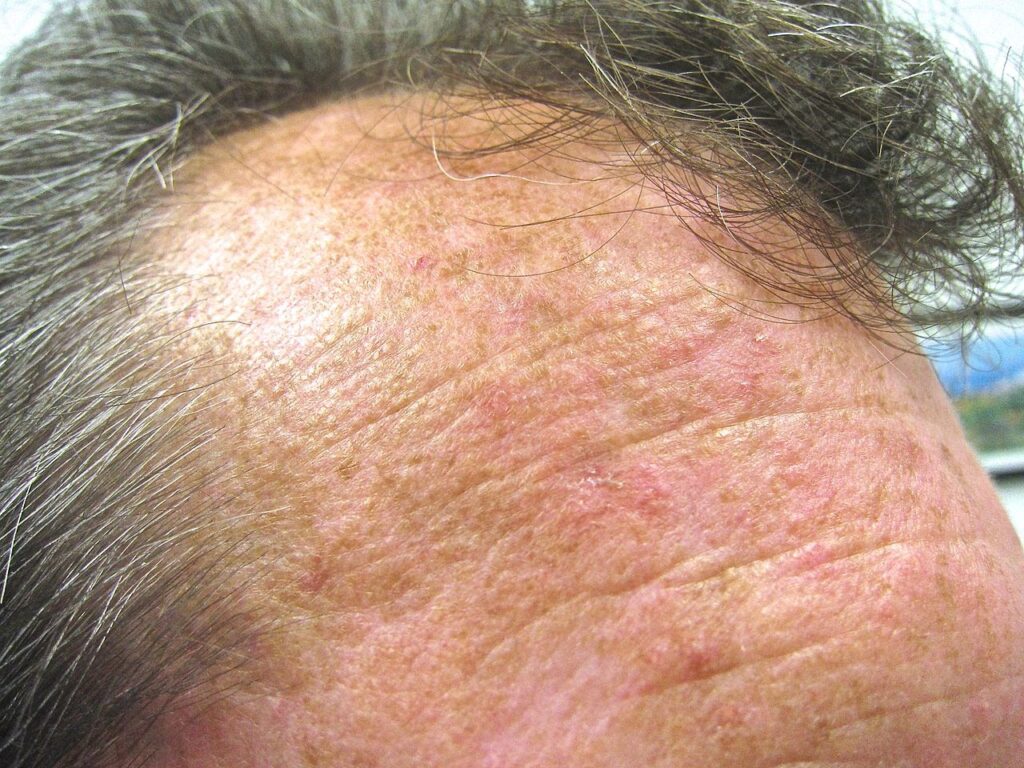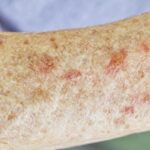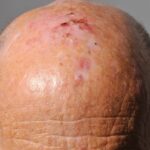Actinic keratosis (AK), also known as solar keratosis, is a common precancerous condition caused by prolonged exposure to ultraviolet (UV) rays. This skin condition predominantly affects areas such as the face and scalp, which are frequently exposed to sunlight. Left untreated, actinic keratosis can progress to squamous cell carcinoma, making early diagnosis and treatment essential.

This article explores the causes, symptoms, and effective treatment options for actinic keratosis on the face and scalp, along with prevention strategies to minimize its risk.
What is Actinic Keratosis?
Actinic keratosis refers to rough, scaly patches that develop on the skin due to chronic sun exposure. These lesions are precancerous, meaning they have the potential to evolve into skin cancer. The face and scalp are among the most commonly affected areas, particularly in individuals with fair skin or those who spend significant time outdoors without sun protection.
Causes of Actinic Keratosis on the Face and Scalp
The primary cause of actinic keratosis is prolonged exposure to UV rays from the sun or artificial sources like tanning beds. The damage accumulates over time, leading to cellular changes in the skin.
Risk Factors
- Sun Exposure: Frequent, unprotected exposure to sunlight significantly increases the risk of actinic keratosis.
- Skin Type: People with fair skin, light-colored hair, and blue or green eyes are more susceptible.
- Age: The likelihood of developing actinic keratosis rises with age due to cumulative sun damage.
- Immunosuppression: Individuals with weakened immune systems, such as transplant recipients or those undergoing chemotherapy, are at higher risk.
- Geographical Location: Living in sunny or high-altitude areas increases exposure to harmful UV rays.
Recognizing Symptoms of Actinic Keratosis
Actinic keratosis presents as:
- Rough, Scaly Patches: These are often pink, red, or flesh-colored and may feel like sandpaper.
- Itching or Burning Sensation: Affected areas may itch, burn, or feel tender when touched.
- Flat or Raised Lesions: Lesions can appear as flat spots or slightly elevated growths.
- Cluster Formation: Multiple lesions may form in close proximity, especially on high-risk areas like the forehead, nose, scalp, or cheeks.
Diagnosing Actinic Keratosis
Clinical Examination
Dermatologists typically diagnose actinic keratosis through a visual inspection of the skin. A magnifying tool called a dermatoscope may be used for a closer examination.
Biopsy
In cases where the lesion appears suspicious or if there’s a possibility of squamous cell carcinoma, a skin biopsy may be performed. This involves removing a small sample of the lesion for laboratory analysis.
Treatment Options for Actinic Keratosis on the Face and Scalp
1. Topical Medications
Topical treatments are commonly prescribed for mild to moderate actinic keratosis and include:
- 5-Fluorouracil (5-FU): A chemotherapy cream that destroys abnormal cells.
- Imiquimod: An immune-response stimulator that helps the body eliminate damaged cells.
- Diclofenac Gel: An anti-inflammatory treatment suitable for less severe cases.
- Ingenol Mebutate: A plant-derived gel that targets abnormal cells.
2. Cryotherapy
Cryotherapy involves freezing the lesions with liquid nitrogen, causing them to peel off and make way for healthy skin.
3. Photodynamic Therapy (PDT)
In PDT, a photosensitizing agent is applied to the lesions, followed by exposure to a specialized light source. This activates the agent, destroying abnormal cells.
4. Chemical Peels
Chemical peels use acidic solutions to exfoliate damaged skin, effectively removing actinic keratosis lesions and promoting skin regeneration.
5. Surgical Removal
For thick or resistant lesions, surgical excision may be necessary. Techniques like curettage and electrodesiccation can also be used to remove lesions.
Prevention of Actinic Keratosis on the Face and Scalp
1. Sun Protection
- Use broad-spectrum sunscreens with SPF 30 or higher daily.
- Wear wide-brimmed hats and UV-blocking sunglasses.
- Avoid sun exposure during peak hours (10 AM to 4 PM).
2. Regular Skin Checks
Monitor your skin for new or changing lesions and consult a dermatologist for regular screenings.
3. Avoid Tanning Beds
Artificial UV rays are as harmful as natural sunlight and should be avoided entirely.
Actinic keratosis on the face and scalp is a preventable and treatable condition if addressed early. By recognizing the symptoms, understanding the risk factors, and implementing a combination of protective measures and effective treatments, individuals can minimize their risk and maintain healthy skin. Regular dermatological consultations are key to ensuring timely intervention and reducing the risk of progression to skin cancer.

